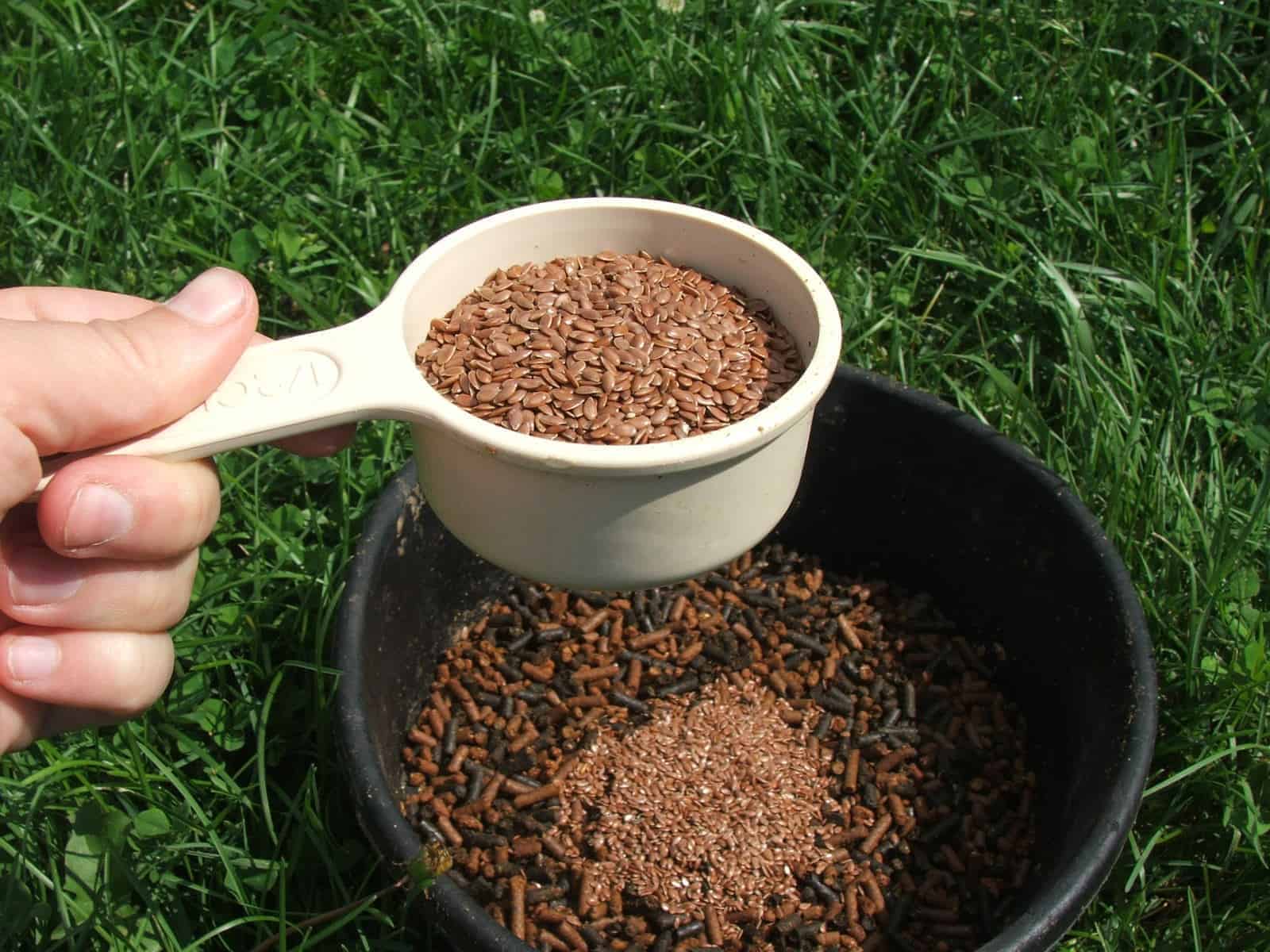5 Facts About Flax

Flaxseed is a popular nutritional supplement for horses, and many feed companies incorporate this grain as a caloric component in their products. But what exactly is flaxseed and how does it benefit the horse? Here are five things to know about flaxseed.
What is flaxseed?
Flaxseed is produced by the flax plant, commonly grown in cool, northern climates, such as North Dakota and Montana. Canada is the No. 1 flaxseed producer due to its ideal climate conditions. Flaxseed is also known as “flax” or “linseed.”
What does flax contain?
Flaxseed contains an average of 40% fat and is one of the few vegetable sources of omega-3 fatty acids (mainly alpha-linolenic acid). Flaxseed also contains around 30% highly digestible fiber and 20% protein.
Should I use whole or processed flax?
Flaxseed can be fed whole to horses; however, due to its hard outer coating, digestibility of the nutrients—especially the fatty acids—is limited when fed whole. Ideally, flax should be fed ground to maximize nutrient digestion. A word of caution: To prevent rapid degradation of fatty acids and, thus, rancidity, either grind flaxseed fresh before each feeding, or use a stabilized flaxseed product. Also, avoid soaking or boiling whole flaxseed as this could alter its nutrient profile.
How does it benefit the horse?
In research environments, adding fat to a horse’s diet has shown to improve skin, hair coat, and body condition and reduce excitability. Most what we know about omega-3’s benefits in horses has been translated from human research.
Forages and concentrates typical in an equine ration contain small amounts of omega-3 fatty acids. Therefore, it’s beneficial to supplement horses’ rations with this essential fat. Research in equids suggests adding one pound of milled flaxseed per day can reduce the allergic response to recurrent seasonal pruritis, or sweet itch.
Also, omega-3s could have beneficial effects for horses suffering from inflammatory diseases such as heaves and osteoarthritis. Researchers have not yet determined the exact physiological mechanism to these benefits, and more research is needed to further examine flaxseed’s role in immune response.
How should I add flaxseed to my horse’s diet?
Ground flaxseed has been fed up to a maximum one pound per day without adverse effects. But as with any fat supplement, flaxseed should be gradually introduced into the horse’s diet over the course of three to five days. This allows the digestive system time to adapt to the added fat. Similar to other grains, flaxseed has an inverse calcium to phosphorous ratio, so your horse’s diet should be balanced accordingly.
Take-Home Message
Flaxseed can be a valuable tool in your horse’s nutrition program as a source of calories and fiber, and it is an excellent source of fat, particularly omega-3’s. Use the ground, stabilized form to prevent rancidity and increase the nutrients’ digestibility.
Written by:
Kristen M. Janicki, MS, PAS
Related Articles
Stay on top of the most recent Horse Health news with















